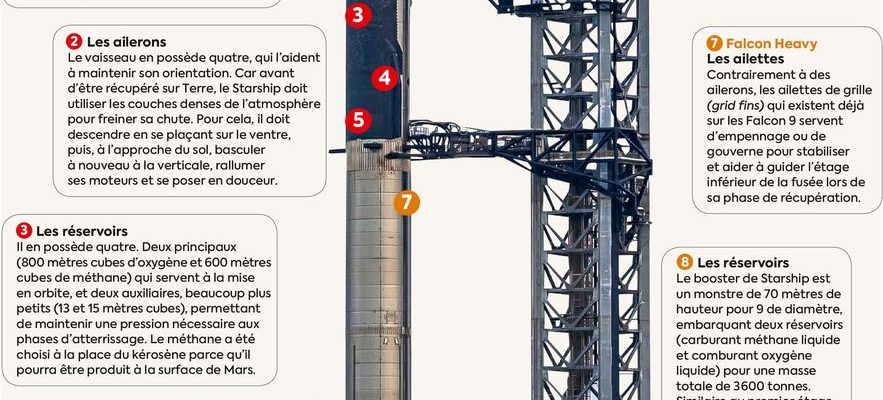In the middle of all the more or less crazy projects of Elon Musk, there are some serious ones that deserve special attention. Undoubtedly, that of the Starship rocket, designed to become the tallest rocket ever built, is one of them. Last February, at its Boca Chica base in Texas, Space X successfully carried out a ground test of the engines of its Super Heavy Booster, the first stage of the rocket. This Monday, April 17, the mission is even more grandiose since it is a question of making it carry out its first orbital flight.
On the night of Friday to Saturday, Space X has, in fact, received authorization from the FAA (the agency responsible for regulations and controls concerning aviation), to carry out a test flight. A two and a half hour shooting window will open this Monday from 7 a.m. local time, or 2 p.m. in France. And while the outcome of the test is uncertain, Space X said success will lie in “how much you learn” from this attempt.
A rocket 120 meters high
If there is one thing to remember before this Monday’s test, it is that the human being has never attempted to launch such a large rocket. Starship is 120 meters high, more than the current largest, the Saturn V, 110 meters high, and significantly more than the recent Space Launch System developed by NASA (98 meters).
The stated goal: to germinate the idea that Space X will be the space carrier of tomorrow. Indeed, Elon Musk would like Starship to transport travelers from Earth to the Moon, and vice versa, but also, one day, in the direction of Mars. Starship has already been chosen by NASA to land its astronauts on the Moon during the Artemis 3 mission, which is officially due to take place in 2025.
Starship
© / The Express
33 very large engines to launch the first stage
Space X consists of two stages, which for a rocket isn’t very much. Some have up to five. But the first stage, called Super Heavy, needs a lot of power to take off. Each of the 33 engines has a thrust capacity of 250 tonnes…
In the Free Belgiumthe expert in the strategy department at Cnes, the French space agency, Christophe Bonnal explains: “The engines burn their fuel for a few minutes and then the stage returns to land at the starting point. But for the first flight , scheduled for April 17, it will come to rest on the waves in the ocean in front of the launch base, as a precaution.
The second floor, future host of passengers
The second stage, the Starship, is equipped with six large Raptor engines. In February, SpaceX conducted an impressive ground test of these rocket engines. A total of 31 of 33 had ignited, “the highest number of simultaneous rocket engine ignitions in history,” according to SpaceX.
The Starship spacecraft has already made suborbital test flights, at an altitude of about ten kilometers, which ended in explosions. When it is ready, it is he who will fulfill many missions: flight to the Moon, launching of satellites… Note that Elon Musk wants the two stages to be able, in the long term, to return to land on Earth. Making a rocket fully reusable would drastically limit the cost of flights.
